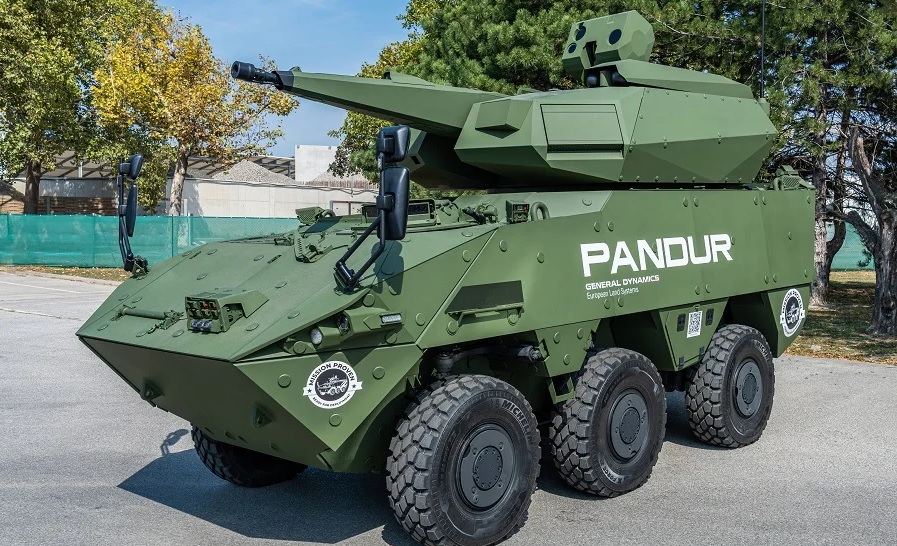India
GE Aerospace is preparing to deliver the first two F-404 engines to India this month, marking a crucial step in accelerating the production of the Tejas Light Combat Aircraft (LCA). The US aerospace giant has committed to supplying a total of eight engines by March 2025, providing the necessary power for Hindustan Aeronautics Limited (HAL) to speed up the delivery of Tejas Mk1 Trainer and Mk1A jets to the Indian Air Force (IAF).This new phase of deliveries aligns perfectly with HAL’s production schedule. The company has already completed five Tejas Mk1 Trainer aircraft, and three more are expected to be ready by the end of the year. The first batch of these aircraft will soon be ready for the IAF, boosted by the timely arrival of the F-404 engines. By the end of March 2025, HAL aims to complete three more Trainer jets, alongside several Mk1A models, ensuring that India's air defense capabilities continue to grow.The F-404 engine is integral to the performance of the Tejas LCA, known for its reliability and efficiency in combat aircraft. This engine, developed by GE Aerospace, is a low-bypass turbofan engine that has powered a range of fighter jets worldwide. The F-404 provides thrust levels of around 10,500 pounds and can achieve supersonic speeds with high fuel efficiency. Its design also incorporates advanced cooling systems and materials that enhance durability and operational performance. For HAL, integrating the F-404 engines into the Tejas Trainer and Mk1A variants offers the ability to meet the demanding specifications required by the IAF, especially as they work to replace older Grade B engines in some Trainer models.HAL has strategically chosen to replace some of these older engines before the final aircraft are delivered to the IAF, ensuring maximum efficiency and reliability. The collaboration between HAL and GE Aerospace is a key component in India's push to strengthen its domestic defense manufacturing capabilities, and the timely delivery of the F-404 engines underscores this partnership's success.With the steady supply of F-404 engines from GE Aerospace, HAL is well-positioned to meet the IAF’s growing demands for the Tejas Mk1A, a crucial element in India’s defense arsenal. This production ramp-up signifies a major milestone in India's indigenous fighter aircraft program, demonstrating the country's determination to reduce reliance on foreign aircraft and boost its domestic defense industry.As India continues to build its aerospace capabilities, the collaboration between GE and HAL highlights the importance of global partnerships in achieving technological milestones and delivering advanced military solutions. The F-404 engine will play a critical role in this journey, powering India’s future in modern air combat.
Read More → Posted on 2024-09-05 15:22:37World
Ukraine’s Ministry of Defence has unveiled its first underground bunker hospital, a pioneering medical facility designed to save lives on the frontline. Located in Kyiv, this state-of-the-art facility represents a significant step forward in ensuring the well-being of Ukrainian soldiers, as they continue to face the brutal realities of war against Russian forces. With a construction cost of approximately 20 million hryvnias ($486,431), the facility is a result of a collaborative effort between the Ukrainian government and local steel conglomerate Metinvest.The hospital, consisting of six steel bunkers, each 7.6 meters long and 2.5 meters in diameter, is equipped to provide emergency medical services that meet NATO’s Role 2 standards. This allows the facility to offer intensive care, stabilization, and post-treatment care, much like a civilian hospital, but with the added protection required for the warzone. Each bunker is fitted with advanced medical equipment such as oxygen concentrators, cardiac monitors, defibrillators, ventilators, and surgical tools. The total investment in medical supplies alone is estimated at 7 million hryvnias ($170,251).The underground hospital is designed to function as a second-echelon medical unit, meaning it can handle critical care for injured soldiers before they are transported to other medical facilities for further treatment. Inside the facility, two operating theaters, two resuscitation units, and resting modules ensure that over 100 patients can be treated at any given time. The layout also includes water supply, ventilation, drainage systems, and even alternative power sources, which are crucial in the event of an attack. Additionally, the hospital is equipped with electronic warfare systems to protect against enemy surveillance and attacks.The commander of the Ukrainian East Medical Forces, Roman Kuzev, highlighted the significance of this medical hub. “These underground facilities are critically important for saving the lives of our soldiers,” Kuzev said. “With the intensity of the battles, it’s essential to provide swift and secure medical assistance to our heroes. This is just the beginning of a larger initiative aimed at bolstering our medical infrastructure for frontline troops.”The development of this underground hospital is part of a broader effort by Ukraine to enhance its medical capabilities in response to the continued aggression from Russia. Since the start of the full-scale invasion in 2022, Metinvest, the industrial giant that helped build the hospital, has invested over 7.5 billion hryvnias ($182.4 million) in Ukraine’s recovery, with around 4 billion hryvnias ($97.2 million) dedicated to defense-related projects.Oleksandr Myronenko, the Chief Operating Officer of Metinvest, emphasized the importance of the project: “This hospital, located deep underground, is one of the most ambitious and challenging undertakings we’ve had since the war began. Every second counts in saving the lives of our defenders, and we have done everything in our power to make sure doctors can offer timely and effective medical assistance.”As the war continues, Ukraine’s focus on protecting its soldiers extends beyond the battlefield. The creation of these bunker hospitals ensures that critical medical care can be administered quickly, even under heavy enemy fire, making a significant difference in the survival rates of frontline troops. It’s a powerful demonstration of the country's resilience and dedication to safeguarding its defenders in the face of relentless attacks from Moscow’s forces.
Read More → Posted on 2024-09-05 15:19:35India
The Defence Research and Development Organisation (DRDO) is making significant strides in India's next-generation fighter aircraft, the Advanced Medium Combat Aircraft (AMCA). One of the most exciting developments in this ambitious project is the exploration of an Electro-Optical Targeting System (EOTS) to enhance the aircraft's stealth capabilities and reduce its radar cross-section (RCS). This move aligns the AMCA with global trends in fifth-generation fighter jets and promises to make it a formidable player in modern air warfare.At the heart of this innovation is the Instruments Research & Development Establishment (IRDE), a key wing of the DRDO, tasked with developing this cutting-edge technology. The EOTS is expected to transform how the AMCA identifies and engages targets, offering a passive sensor solution that doesn't compromise the aircraft's invisibility to enemy radar. This feature is crucial for stealth operations, as it eliminates the need for active radar emissions, which can give away the aircraft's position.The technology behind EOTS is not entirely new; it's already in use in advanced fighters like the American F-35 Lightning II and China's J-20. These systems use high-resolution infrared cameras to detect and track targets without revealing the aircraft's presence. Unlike conventional radar systems that emit detectable signals, the EOTS works passively, allowing the fighter to maintain a low profile in contested airspace. This stealth capability is a cornerstone of fifth-generation aircraft, where invisibility can mean the difference between success and failure in combat.One of the most striking features of the EOTS being developed for the AMCA is its innovative design. The system is built around a conformal dome made from segmented sapphire windows, a material chosen for its strength and transparency in the infrared spectrum. These sapphire segments are carefully joined using advanced adhesives, creating a hermetically sealed chamber that protects the sensitive electro-optical components inside. The dome’s design minimizes aerodynamic drag and helps maintain the aircraft's low RCS, ensuring that the AMCA remains difficult to detect even at supersonic speeds.The system is mounted on a two-axis gimbal, which allows for high-precision targeting and superior tracking capabilities. This setup enables the EOTS to capture high-resolution images of targets, improving the pilot's situational awareness in critical moments. The gimbal mechanism also provides operational resilience, allowing the system to function effectively even in high-speed, high-G environments.Interestingly, not all fifth-generation fighters have embraced EOTS. While the F-35 and J-20 both feature this technology, Russia's Su-57 uses an Infrared Search and Track (IRST) system instead. IRST systems are effective at detecting infrared signatures, but they tend to have a larger RCS, which can compromise an aircraft's stealth profile. The decision to go with EOTS for the AMCA suggests that the DRDO is prioritizing stealth while still ensuring the aircraft has cutting-edge target acquisition and engagement capabilities.The inclusion of EOTS also positions the AMCA closer to global benchmarks for fifth-generation aircraft. Initial AMCA models displayed at Aero India and other defense expos did not feature an EOTS, but this new development suggests that DRDO is considering its integration in future iterations. Whether EOTS will be included in the initial production models or reserved for later upgrades remains to be seen, but its potential addition could significantly elevate the AMCA's standing among its peers.With the AMCA expected to play a pivotal role in India's defense strategy, the development of EOTS underscores DRDO's commitment to equipping the aircraft with the latest in stealth and targeting technology. By reducing the aircraft's RCS and enhancing its ability to engage targets without being detected, the EOTS could be a game-changer for the AMCA, making it one of the most advanced fighter jets in the world.The journey towards a fully operational AMCA with EOTS integration is still ongoing, but this promising development signals that India is well on its way to fielding a stealth fighter capable of matching the world's best. As DRDO continues to push the boundaries of technology, the AMCA project stands as a testament to India's growing capabilities in defense innovation.
Read More → Posted on 2024-09-05 07:25:20India
In a significant move reflecting deepening defense ties, Japan has confirmed the export of its advanced naval ship communications antenna, known as the UNICORN, to India. This agreement marks a milestone as the NORA-50 antenna becomes the second defense equipment Japan has exported since lifting its ban on non-lethal defense equipment in 2014. The decision follows Japan’s recent exports of air surveillance radar to the Philippines and the Patriot Advanced Capability system to the US, underscoring Tokyo's increasing role in global defense partnerships.The UNICORN, officially referred to as the Unified Complex Radio Antenna, represents a leap forward in naval technology. Developed by a collaboration among NEC Corporation, Sampa Kogyo KK, and Yokohama Rubber, this sophisticated antenna system is currently utilized on Japan Maritime Self-Defense Force’s Mogami-class stealth frigates. Its primary function is to detect missiles and drones by sensing radio waves, a critical capability in modern naval warfare.The antenna's design is particularly notable for its stealth features. The UNICORN consolidates multiple antennas that were previously mounted on separate masts into a single, streamlined support structure. This innovation reduces the radar cross-section, enhancing the ship's stealth capabilities by minimizing its visibility to enemy radar systems. The radome covering further protects the antennas while contributing to the overall stealth profile of the vessel.Additionally, the optimal placement of antennas within the UNICORN system not only improves the maximum detection range of incoming threats but also simplifies both maintenance and installation. This advanced technology is expected to bolster India’s naval capabilities significantly, integrating seamlessly with the country's defense strategies.During the recent Japan-India 2+2 Foreign and Defence Ministerial Meeting, officials from both nations expressed satisfaction with the progress on this technology transfer and discussed potential future collaborations in ship maintenance and unmanned ground vehicle robotics. This agreement reflects a broader trend of expanding defense cooperation between the two countries, emphasizing shared interests in enhancing maritime security and technological advancement.The export of the UNICORN antenna symbolizes a new era of strategic partnership between Japan and India, highlighting the growing synergy in defense technology and mutual commitment to regional stability.
Read More → Posted on 2024-09-04 15:58:29World
In the face of increasing threats to navigation systems worldwide, Anschütz gyrocompasses stand out for their exceptional resilience to jamming and spoofing attacks. The rise in interference with Global Navigation Satellite Systems (GNSS) has exposed vulnerabilities in many navigation systems, but Anschütz’s gyrocompasses offer a robust alternative that ensures reliable performance even under adverse conditions.Navigating the ThreatsJamming and spoofing represent two major threats to GNSS navigation. Jamming involves disrupting GNSS signals, making them unavailable and leading to a loss of critical navigation data such as latitude, longitude, and speed. Spoofing, on the other hand, involves sending false GNSS signals that mislead navigation systems, resulting in incorrect positional and speed information. Both issues can severely impact the accuracy of navigation, especially for global shipping and trade.Anschütz Gyrocompasses: A Reliable SolutionAnschütz gyrocompasses, such as the Standard 22 NX and the Standard 30 MF, are designed to counteract these threats effectively. The Standard 22 NX is a mechanical gyrocompass that operates independently of external GNSS inputs. It maintains reliable heading information even when GNSS signals are jammed or spoofed. While jamming can cause a minor deviation in speed error correction—up to 2.5 degrees in the worst case—the compass continues to provide accurate heading data, which is crucial for most commercial applications. The Anschütz heading management system also includes measures to restore full accuracy.The Standard 30 MF, a strapdown gyrocompass, employs angular rate sensors and accelerometers. Unlike many strapdown systems, it can function without latitude input, which is particularly advantageous in areas with unreliable GNSS signals. This compass has been rigorously tested in challenging environments, such as offshore supply vessels and Baltic Sea ferries, showing only minor heading deviations. The Standard 30 MF automatically filters out larger position jumps caused by spoofing and generates alarms for smaller deviations. It can operate independently of GNSS systems for up to 28 days, ensuring constant heading information even during extended disruptions.Enhanced Resilience and ManagementBoth the Standard 22 NX and Standard 30 MF are equipped with advanced algorithms and design features that enhance their resilience to jamming and spoofing. For users needing additional measures, the Anschütz heading management system offers several options to further minimize the effects of these threats:Integration of a conventional speed log for speed input.Independent speed and latitude inputs for each compass.Combination of the Standard 22 NX and Standard 30 MF to leverage their respective strengths.Manual input of speed and latitude during incidents of jamming or spoofing.These features ensure that Anschütz gyrocompasses remain a dependable choice for navigation, providing consistent and accurate heading information even in the face of sophisticated electronic threats.By combining robust technologies with advanced countermeasures, Anschütz gyrocompasses effectively address the growing challenges of jamming and spoofing, securing safe and reliable navigation in all conditions.
Read More → Posted on 2024-09-04 15:56:25World
Ukraine has made significant strides in defense technology with the introduction of the “Varta 2,” a state-of-the-art armored vehicle equipped with a powerful 30mm turret. This impressive machine, developed by the Ukrainian defense company Ukrainian Armor, was recently showcased at the International Defense Industry Exhibition in Poland, drawing attention for its combination of speed, power, and advanced protective features.The “Varta 2” is a formidable addition to Ukraine’s defense capabilities, designed to meet the demanding requirements of modern warfare. Built on a robust Turkish BASE chassis, the 14-ton vehicle is powered by a Cummins ISB 6.7 engine, delivering 360 horsepower through an Allison 3200SP automatic transmission. This powertrain allows the Varta 2 to reach speeds of up to 110 kilometers per hour, making it not only heavily armored but also highly mobile—a crucial factor in the fast-paced environments of contemporary battlefields.One of the standout features of the Varta 2 is its formidable “Sich” remote-controlled turret, armed with a 30mm automatic cannon. This weapon system provides the vehicle with substantial firepower, capable of supporting infantry operations and engaging enemy armored units effectively. The turret's precision and fire rate are designed to deliver quick, devastating strikes, making the Varta 2 a key asset in both offensive and defensive operations.But the Varta 2 is more than just a vehicle with a big gun. It represents a decade of accumulated expertise and a deep understanding of the needs of modern military forces. According to Vladyslav Belbas, CEO of Ukrainian Armor, the Varta 2 has been crafted with insights gained from years of operational experience and feedback from the frontlines. The result is a machine that is as much about survival as it is about firepower.The vehicle’s defensive capabilities are where it truly shines. It boasts STANAG 3a/3b mine and ballistic protection, ensuring it can withstand both explosive threats and direct fire. Its ground clearance of 400 mm, along with independent suspension and a Central Tire Inflation System (CTIS), allows the Varta 2 to navigate rough terrains and obstacles with ease. Additionally, the Varta 2 is equipped with modern safety systems, including mine-resistant seats designed to protect the crew from the shockwaves of explosions.Moreover, the vehicle is outfitted with an advanced air filtration system to shield its occupants from chemical and biological threats. This system, combined with the vehicle’s light camouflage, enhances its survivability in various combat scenarios. The Varta 2 also integrates the ICoMWare software suite, providing situational awareness and command support through a secure mesh network enabled by broadband DTC radio stations. This ensures that the crew can maintain communication and coordination in the heat of battle, giving them a tactical edge over adversaries.The Varta 2 is not just another armored vehicle; it is a mobile fortress, engineered to adapt to the unpredictable nature of modern warfare. Its ability to carry a crew of 10, coupled with its cutting-edge technology, makes it a versatile tool for both offensive operations and defensive deployments. The Varta 2’s blend of speed, protection, and firepower marks a significant step forward in Ukraine’s military capabilities, ensuring that its forces remain resilient and effective in the face of evolving threats.
Read More → Posted on 2024-09-04 15:52:15India
In a significant move towards bolstering India's defense capabilities, the country's top military leaders convened in Lucknow for the inaugural Joint Commanders' Conference. This high-level meeting, chaired by Chief of Defence Staff General Anil Chauhan, brought together the chiefs of the Army, Navy, and Air Force, along with other senior military officials, to discuss the government's ambitious plans for the creation of Integrated Theatre Commands and to assess the nation's overall security challenges, particularly along the borders with China and Pakistan.The central theme of the conference, "Sashakt and Surakshit Bharat: Transforming Armed Forces," underscores the government's vision of creating a more robust and secure India through the modernization and integration of its military forces. The discussions primarily focused on establishing joint command and control centers, which are seen as crucial for enhancing the operational efficiency and responsiveness of the armed forces in the face of emerging threats.General Chauhan, in his opening address, emphasized the importance of operational preparedness and the need for continuous modernization to ensure that India's military remains ready and relevant in an increasingly complex global security environment. He highlighted that achieving strategic autonomy requires not only advanced technology and equipment but also a seamless integration of the Army, Navy, and Air Force.The government's theaterisation model aims to achieve precisely this integration by combining the capabilities of the three services into cohesive units that can operate jointly in specific geographical areas. This approach is designed to optimize the use of resources, enhance coordination, and enable more effective responses to security challenges, whether they arise from conventional warfare or asymmetric threats.One of the key aspects discussed during the conference was the establishment of command and control centers equipped with the necessary infrastructure to facilitate rapid decision-making and coordination among the services. These centers will play a pivotal role in ensuring that the military can execute "effect-based operations," a concept that General Chauhan stressed as essential for adapting to the future contours of warfare.The commanders also conducted a comprehensive review of the current security situation along the Line of Actual Control (LAC) with China, particularly in the eastern Ladakh sector, where Indian and Chinese troops have been engaged in a prolonged standoff. Additionally, the security dynamics along the Line of Control (LoC) in Jammu and Kashmir were scrutinized, with a focus on maintaining stability in the region.As part of the broader efforts to enhance jointness and future planning within the military, the conference also addressed the importance of establishing a joint logistics infrastructure and ensuring synergy in financial planning. General Chauhan commended the three services for their ongoing efforts to foster cross-service cooperation, noting that this was a crucial step towards building a "joint culture" that will ultimately lead to fully integrated forces capable of conducting joint operations.The conference's second day is expected to see the participation of Defence Minister Rajnath Singh, who will address the military leadership and provide further guidance on the path ahead. Meanwhile, General Chauhan is scheduled to chair a tri-service financial conference in Delhi, aimed at enhancing cohesion and synergy in the financial management of the armed forces.As India continues to navigate a challenging security environment, the creation of joint command and control centers and the broader theaterisation initiative represent a strategic shift towards a more integrated and capable military. These efforts are crucial for ensuring that India's armed forces are well-prepared to defend the nation's interests and maintain stability in the region.
Read More → Posted on 2024-09-04 15:42:16World
General Dynamics European Land Systems-Steyr (GDELS-Steyr) is set to introduce an impressive new variant of its Pandur 6x6 Evo wheeled armored vehicle at the AIRPOWER24 airshow in Zeltweg, Styria, on September 6th and 7th, 2024. This latest iteration of the Pandur Evo is equipped with the Skyranger 30 turret, a significant upgrade that further underscores the vehicle’s versatility and adaptability in modern military operations.The Pandur Evo has been a cornerstone of the Austrian Armed Forces since its introduction as a personnel carrier in 2018. Its robust design and flexibility have made it a reliable asset across various mission profiles. Earlier this year, Austria commissioned an additional 225 Pandur vehicles in twelve different configurations, ranging from medical evacuation (MEDEVAC) and command and control to anti-tank, reconnaissance, and electronic warfare roles. The Skyranger 30 variant, specifically tailored for short-range air defense (SHORAD), adds a crucial new dimension to the Pandur’s capabilities.At the heart of this new variant is the unmanned Skyranger 30 turret. This advanced system is built on the proven Pandur platform, powered by a 455-horsepower engine that ensures the vehicle's mobility remains uncompromised, even with the added weight of the new turret. The Skyranger 30 is armed with a 30mm x 173 revolver cannon capable of firing airburst ammunition, which is highly effective against aerial threats such as drones and low-flying aircraft. Complementing the cannon are two Mistral guided missile launchers, providing the vehicle with potent air defense capabilities.The Skyranger 30 turret is not just about firepower; it also boasts a sophisticated sensor suite. This includes a radar system and an electro-optical sensor package with TV and infrared cameras, alongside a laser rangefinder. These sensors work together to provide comprehensive surveillance and tracking capabilities, ensuring that the Pandur Evo can detect, track, and engage threats with high precision. The vehicle’s interior houses two control consoles for the weapon system, along with advanced fire control computers, allowing the crew to operate the turret with efficiency and accuracy.One of the standout features of the Pandur Evo with the Skyranger 30 turret is its role in convoy protection. The vehicle is designed to shield infantry forces from a range of aerial threats, both manned and unmanned. This aligns with the Austrian Army’s “defend-the-defender” strategy, which emphasizes protecting troops as they carry out their missions. The vehicle’s modular design also means it can be adapted for other roles, making it a highly valuable asset on the battlefield.The AIRPOWER24 airshow, Europe’s largest military airshow and the biggest event for the Austrian Armed Forces this year, serves as the perfect venue for showcasing the Pandur Evo with the Skyranger 30 turret. The event is expected to draw around 300,000 visitors and feature 200 civil and military aircraft from 20 countries. In addition to the aerial displays, the event will also include demonstrations of the Army’s land capabilities and an international technology and business exhibition.The introduction of the Pandur Evo with the Skyranger 30 turret represents a significant advancement in mobile air defense technology. By integrating cutting-edge firepower, advanced sensors, and the proven mobility of the Pandur platform, GDELS-Steyr has created a vehicle that is well-equipped to meet the challenges of modern warfare. This new variant is not just a testament to the modularity of the Pandur Evo but also a clear indication of the future direction of military vehicle development.
Read More → Posted on 2024-09-04 15:38:29Space & Technology
In a significant move to strengthen India's semiconductor ecosystem, the Union Cabinet, led by Prime Minister Narendra Modi, has approved a new semiconductor unit to be established by Kaynes Semicon Pvt Ltd in Sanand, Gujarat. This development is part of the India Semiconductor Mission, a broader initiative aimed at positioning India as a global hub for semiconductor manufacturing.The new unit in Sanand represents a substantial investment of ₹3,300 crore. Once operational, it will have the capacity to produce 60 lakh semiconductor chips per day. These chips will cater to a diverse range of industries, including automotive, electric vehicles, consumer electronics, telecommunications, mobile phones, and industrial applications. This breadth of application underscores the growing importance of semiconductors in India's industrial and technological landscape.This initiative is not isolated; it builds upon the Program for Development of Semiconductors and Display Manufacturing Ecosystem in India, which was launched in December 2021 with a total outlay of ₹76,000 crore. The program aims to foster a self-sustaining semiconductor ecosystem, reducing dependence on imports and establishing India as a key player in the global semiconductor supply chain.The Sanand unit is part of a larger semiconductor cluster emerging in Gujarat. In June 2023, the Union Cabinet approved the first semiconductor unit in Sanand, followed by the approval of three more units in February 2024. These include a semiconductor fab by TATA Electronics in Dholera, Gujarat, another unit in Morigaon, Assam, and a second unit in Sanand by CG Power. Combined, these four units represent an investment of nearly ₹1.5 lakh crore and will collectively have a daily production capacity of approximately 7 crore chips.Construction on these units is progressing rapidly, and the region around Sanand is transforming into a robust semiconductor hub. This concentrated development is expected to have far-reaching effects on the local economy and the national semiconductor landscape. As these units become operational, they will play a crucial role in meeting the increasing domestic demand for semiconductors and positioning India as a competitive player in the global market.The approval of Kaynes Semicon's unit is a testament to the Indian government's commitment to developing a vibrant semiconductor ecosystem. By facilitating significant investments and encouraging domestic manufacturing, India is taking crucial steps toward technological self-reliance and economic growth in the semiconductor sector.
Read More → Posted on 2024-09-04 15:35:54World
Azerbaijan is making significant strides in modernizing its air force, with a focus on equipping its newly acquired JF-17 Thunder fighter jets with advanced Turkish-made missiles. This move, aimed at bolstering the combat capabilities of its air force, is part of a broader $1.6-billion deal with Pakistan for 24 JF-17 Thunder fighters in the latest Block III configuration.The JF-17 Thunder, a joint product of Pakistan Aeronautical Complex and China’s Chengdu Aircraft Industry Corp, is a versatile, lightweight fighter jet capable of a wide range of missions, from air-to-air combat to reconnaissance and close air support. The Block III variant, which Azerbaijan will soon receive, comes with significant upgrades, including an advanced active electronically scanned array (AESA) radar, improved avionics, and enhanced weaponry. This upgrade allows the aircraft to reach speeds exceeding Mach 2, making it a formidable asset in Azerbaijan’s defense arsenal.A key component of Azerbaijan's plan to enhance the JF-17’s lethality is the integration of Turkish Bozdoğan and Gökdoğan missiles. These state-of-the-art missiles, developed by Turkey's TÜBİTAK SAGE, are designed to provide the JF-17 with a significant edge in air-to-air combat.The Bozdoğan missile, intended for short-range engagements, has a range of up to 25 kilometers (about 15 miles). It is equipped with a powerful fragmentation warhead and an infrared guidance system, making it highly effective in close combat situations. This missile is particularly valuable for dogfights, where quick and precise strikes are crucial.On the other hand, the Gökdoğan missile is designed for medium-range engagements, capable of hitting targets up to 65 kilometers (about 40 miles) away. It utilizes an advanced active radar guidance system, allowing it to intercept targets beyond visual range with high accuracy. This missile significantly enhances the JF-17's ability to engage threats at a distance, providing Azerbaijan with a broader tactical reach.In addition to these missiles, the JF-17s are also being outfitted with an advanced avionics suite from Ankara, further enhancing their operational effectiveness. This suite will likely include advanced targeting systems, electronic warfare capabilities, and improved communication systems, all of which are essential for modern air combat.The decision to integrate these Turkish missiles into the JF-17 fleet not only enhances Azerbaijan’s air combat capabilities but also strengthens its defense ties with Turkey, a key regional ally. The combination of the JF-17's advanced features and the cutting-edge technology of the Bozdoğan and Gökdoğan missiles will make Azerbaijan’s air force a more formidable player in the region.Initial deliveries of the JF-17 Thunder fighters are expected to begin next year, with the full order likely to be completed by 2027. As Azerbaijan continues to modernize its military, the integration of these advanced systems marks a significant step forward in its efforts to ensure its airspace's security and maintain a strategic edge in the region.
Read More → Posted on 2024-09-04 15:34:12World
China is making significant inroads into the global defense market, particularly in the Middle East, where the demand for cutting-edge military technology is on the rise. A prime example of this strategic push is the promotion of the OW5-A50 laser weapon system by China North Industries Corporation (NORINCO), one of the country's leading defense manufacturers. This state-of-the-art laser system has been showcased at major defense exhibitions across the Middle East, including in Saudi Arabia, Qatar, and Egypt, signaling China's ambitions to become a key player in the region's defense sector.The OW5-A50 laser weapon system represents a leap forward in air defense technology, specifically designed to counter modern threats that are increasingly difficult to manage with traditional systems. The system's primary focus is on neutralizing what military experts term as “low, slow, and small” aerial threats—these include drones, unmanned aerial vehicles (UAVs), and other small, low-altitude flying objects that have become common in asymmetric warfare. This capability is particularly relevant in the Middle East, where such threats are frequently encountered due to the region's complex security landscape.At its core, the OW5-A50 is a mobile, self-contained unit, which sets it apart from many traditional air defense systems that require extensive support infrastructure. The system is built on a vehicle platform that integrates all the necessary components for autonomous operation. The launcher and landing system are centrally located on the vehicle, flanked by a presumed battery unit at the front, and a command and control center at the rear, enclosed in a glass-fronted compartment. This integrated design allows the system to be rapidly deployed and operational with minimal setup time, making it highly effective in fast-paced combat situations.One of the most notable features of the OW5-A50 is its mobile launch capability, which suggests that the system is equipped with its own power supply and command facilities, eliminating the need for external support vehicles. This high level of integration not only enhances the system's mobility but also its combat readiness, allowing for quick responses to emerging threats in the field. NORINCO's spokesperson highlighted this advantage at the Egypt International Air Show 2024, emphasizing the system's ability to provide reliable protection against the increasingly prevalent aerial threats in modern warfare.China's decision to aggressively market the OW5-A50 in the Middle East is part of a broader strategy to expand its influence in international defense markets. The Middle East, with its unique security challenges and increasing focus on advanced defense technologies, represents a lucrative market for China. By offering innovative and effective solutions like the OW5-A50, China aims to position itself as a reliable partner for countries in the region seeking to enhance their defense capabilities.The OW5-A50's introduction to the Middle Eastern market is not just about selling a product; it is a strategic move by China to establish a foothold in a region that has traditionally been dominated by Western defense suppliers. With its advanced features and tailored capabilities, the OW5-A50 laser weapon system is likely to attract significant interest from Middle Eastern countries looking to bolster their air defense systems. As China continues to showcase its military technology in the region, the OW5-A50 could become a cornerstone of China's expanding influence in the global defense market.
Read More → Posted on 2024-09-04 15:31:33India
The Indian Air Force (IAF) has long been on a quest to bolster its indigenous fighter jet capabilities, with the Tejas Mk2 being one of its most ambitious projects. At the heart of this development lies the Indian Air Force's Software Development Institute (SDI), a lesser-known yet pivotal entity that is quietly transforming the way weapons are integrated and tested on fighter jets. The SDI’s involvement is proving to be a game-changer, especially in testing advanced weaponry like the Astra, ASRAAM, and RudraM missiles, all without the need for an actual Tejas Mk2 aircraft.Virtual Integration: A New Frontier in Fighter Jet DevelopmentTraditionally, integrating and testing new weapons on fighter jets required actual flight tests, a process that was not only time-consuming but also expensive. However, the collaboration between the SDI and the Aeronautical Development Agency (ADA) has ushered in a new era of virtual integration. This innovative approach allows engineers to simulate the integration of various weapon systems onto the Tejas Mk2, assessing their performance and compatibility without ever needing the physical aircraft to take to the skies.This method is particularly beneficial for a project as complex as the Tejas Mk2, which is designed to carry a sophisticated arsenal of weapons. By conducting these tests virtually, the IAF can identify and address potential issues early on, ensuring that the aircraft and its weapons systems are fully optimized before they are even physically paired. This not only accelerates the development timeline but also significantly reduces costs and risks associated with live testing.Key Weapons in the Tejas Mk2 ArsenalThe Tejas Mk2 is set to be equipped with a diverse range of weapons, many of which are at the cutting edge of military technology. Among these are the Astra Mark 1 and Mark 2 beyond-visual-range air-to-air missiles (BVR-AAMs), which have been indigenously developed to enhance the IAF’s air superiority capabilities. These missiles are designed to engage enemy aircraft at ranges of up to 110 kilometers, providing the Tejas Mk2 with a formidable long-range strike capability.In addition to the Astra missiles, the Tejas Mk2 will also be armed with the Advanced Short-Range Air-to-Air Missile (ASRAAM), which is known for its exceptional agility and accuracy in close-combat scenarios. These missiles will be mounted on the aircraft’s wingtips, a design choice that maximizes the fighter's aerodynamic efficiency while maintaining its lethal strike potential.The RudraM anti-radiation missiles, developed by the Defence Research and Development Organisation (DRDO), are another critical component of the Tejas Mk2’s weaponry. These missiles are designed to target and destroy enemy radar installations, thereby crippling their ability to track and engage the aircraft. The SDI has been instrumental in developing the software necessary to integrate these missiles with the Tejas Mk2’s avionics systems, ensuring seamless operation and precise targeting.Beyond Air Combat: Expanding the Tejas Mk2’s RoleThe Tejas Mk2 is not just a platform for air superiority; it is also being designed to excel in ground-attack roles. The aircraft will be equipped with various bombs and guided munitions, including the Tara high-speed, low-drag glide bomb and laser-guided bombs (LGBs) fitted with laser-guidance kits. These weapons will enable the Tejas Mk2 to strike ground targets with pinpoint accuracy, making it a versatile asset in the IAF’s arsenal.Moreover, the Tejas Mk2 will also be capable of carrying the SCALP missile, a long-range, air-launched cruise missile originally procured for the Rafale fighters. The integration of the SCALP missile onto the Tejas Mk2 will further enhance the aircraft's ability to carry out deep strikes against high-value targets.A Future of Self-Reliance and EfficiencyThe SDI’s role in the Tejas Mk2 project goes beyond just integrating weapons. By working closely with the ADA, the SDI is transferring critical technical knowledge to the IAF, enabling the air force to become more self-reliant in the future. This transfer of knowledge is empowering the IAF to conduct its own integration and flight testing, reducing its dependence on external entities and making the process more efficient.As the Tejas Mk2 project progresses, the SDI’s contributions are proving to be invaluable. Through its innovative approach to virtual integration, the SDI is ensuring that the Tejas Mk2 will not only meet but exceed expectations as a next-generation fighter jet. This collaboration is setting a new standard for how advanced weapons systems are integrated and tested, paving the way for a more self-reliant and capable Indian Air Force.
Read More → Posted on 2024-09-04 15:28:46India
In a significant advancement for India's defense technology, the Indian Navy has reportedly conducted trials of a 2-kilowatt (kW) Directed Energy Weapon (DEW). This trial marks a crucial milestone in India's ongoing efforts to modernize its military capabilities, particularly in the realm of futuristic weaponry. Directed Energy Weapons represent a new frontier in military technology, offering the ability to engage targets with concentrated energy, such as lasers, at the speed of light. These systems have the potential to neutralize a wide range of threats, from incoming missiles to drones, with unprecedented precision and speed. The 2 kW DEW trial is just the beginning, as the Indian Navy is expected to test more powerful versions of these weapons in the near future.The recent trials focused on the 2 kW DEW, which is a relatively low-power system compared to what the future holds. While specific details about the trials remain under wraps, the success of this initial test paves the way for the development of more potent systems. According to unconfirmed reports, plans are already in place to conduct trials for a 10 kW DEW, which would offer significantly enhanced operational capabilities. A 10 kW DEW would not only be more powerful but also more versatile, capable of neutralizing larger or more resilient targets. This progression in DEW technology is part of a broader strategy by the Defence Research and Development Organisation (DRDO) to equip the Indian military with cutting-edge weapons systems. The DRDO is reportedly working on even more advanced DEWs, with power levels ranging from 50 to 100 kW. These high-power systems are designed to counter more substantial threats and could play a crucial role in India's future defense strategy.The potential applications of DEWs are vast. They could be used to disable enemy electronics, destroy unmanned aerial vehicles (UAVs), or even counter missile threats. The key advantage of DEWs lies in their ability to deliver destructive energy almost instantaneously, minimizing the time available for an adversary to react. This capability makes DEWs a formidable addition to any military arsenal, particularly in scenarios where speed and precision are critical.India's investment in DEW technology aligns with global trends, as many advanced militaries are exploring and developing similar systems. The successful testing of the 2 kW DEW by the Indian Navy is a clear indication that India is determined to be at the forefront of this technological revolution.As the development of DEWs progresses, the Indian Navy, along with other branches of the armed forces, will likely continue to play a key role in testing and integrating these weapons into the country's defense architecture. The future trials of more powerful DEWs, such as the upcoming 10 kW system, will be closely watched as they represent a significant step toward fully operational directed energy capabilities.In conclusion, the Indian Navy's recent trials of a 2 kW DEW system signal a promising start in the country's journey toward mastering Directed Energy Weapons. With ongoing efforts to develop more advanced systems, India is positioning itself to enhance its defense capabilities in response to evolving security challenges. As these technologies mature, they will likely become a critical component of India's strategic defense arsenal, offering a powerful new tool in the protection of the nation's interests.
Read More → Posted on 2024-09-04 15:24:43India
Bengaluru-headquartered Flying Wedge Defence and Aerospace (FWDA) recently celebrated a significant milestone with the successful maiden flight of its indigenously developed unmanned aerial vehicle (UAV), the FWD 200B. This Medium Altitude Long Endurance (MALE) drone has been engineered for both surveillance and airstrike missions, offering an intriguing blend of capabilities designed to bolster India’s defense autonomy. Yet, despite the achievements, there are lingering questions about the UAV's classification as a "bomber," particularly when considering its relatively modest payload capacity.A Promising Design with Strategic PotentialThe FWD 200B represents a significant stride in India's UAV development, showcasing a design that is both sophisticated and versatile. The aircraft, which features a wingspan of five meters and a length of 3.5 meters, has a maximum take-off weight of 102 kg. The UAV is powered by a compact yet efficient propulsion system, allowing it to reach a maximum speed of 250 km/h and sustain a cruise speed of 152 km/h. With an operational range of 800 kilometers and an endurance of seven hours, the FWD 200B is well-suited for extended missions, making it a valuable asset for reconnaissance and surveillance operations.However, where the FWD 200B truly distinguishes itself is in its indigenous development. Every component, from the airframe to the control systems, was developed in-house at FWDA's cutting-edge facility in Bengaluru. This level of self-reliance is a testament to the growing capabilities of India’s defense sector and highlights the potential for reduced dependency on foreign military imports.The Payload Dilemma: Can It Truly Be Called a Bomber?While the FWD 200B's engineering is impressive, its designation as a "bomber" has sparked debate. The UAV is equipped to carry a payload of up to 30 kg, which, in military terms, is a relatively light load. This payload capacity raises questions about the effectiveness of the FWD 200B in a bomber role. For comparison, traditional bombers carry payloads in the hundreds or even thousands of kilograms, delivering devastating firepower against enemy targets. The FWD 200B’s 30 kg payload could be equipped with missile-like weapons or small bombs, but the actual destructive capability is limited. A 30 kg bomb could potentially damage light vehicles, small structures, or personnel, but it is unlikely to cause significant destruction against fortified positions or larger targets.Given these limitations, it might be more accurate to classify the FWD 200B as a "strike UAV" or even a "kamikaze drone" rather than a bomber. Such a classification would better reflect its intended use in precision strikes against specific, high-value targets, rather than broader, area-effect bombing.A Cost-Effective Solution with Room for ImprovementFWDA is positioning the FWD 200B as a cost-effective alternative to more expensive imported military drones, such as those from the United States or Israel. This approach has merit, as indigenous production can lead to significant cost savings and reduce the logistical and political complexities of relying on foreign suppliers. However, for the FWD 200B to be a truly viable alternative, it may need further development to enhance its payload capacity and strike capabilities.In its current form, the FWD 200B seems well-suited for roles such as tactical reconnaissance, limited strike missions, or even as a loitering munition (kamikaze drone) where it can be used in a one-time attack. As a platform for larger-scale bombing missions, however, its capabilities fall short. Addressing this discrepancy would be key to unlocking the full potential of the FWD 200B in the Indian military arsenal.ConclusionThe FWD 200B marks an important achievement for FWDA and India’s broader defense sector, representing a step forward in the nation’s UAV development capabilities. While its current payload limitations may preclude it from being an effective "bomber" in the traditional sense, the platform still offers significant strategic value, particularly in cost-effective, precision-strike roles. Moving forward, addressing its payload capacity and refining its mission profile will be critical in ensuring that the FWD 200B can meet the evolving needs of the Indian armed forces.
Read More → Posted on 2024-09-04 15:22:13World
Japan is on the brink of a groundbreaking advancement in energy technology with Helical Fusion's ambitious plan to launch the world’s first steady-state nuclear fusion reactor. This pioneering project, known as HESTIA, is set to mark a new era in energy production, offering a cleaner and virtually inexhaustible power source.Slated for a 2034 launch, the HESTIA reactor aims to become a model of steady-state fusion technology. Unlike traditional fusion reactors that operate in pulsed modes, HESTIA will employ a helical magnetic configuration, designed to maintain continuous fusion reactions. This approach promises a stable generation capacity between 50 and 100 megawatts, with the potential to operate non-stop for extended periods, potentially up to a year.The reactor’s design leverages a unique helical magnetic field to contain and stabilize the plasma, which is crucial for achieving sustained fusion. This technique contrasts with other fusion methods that rely on intermittent energy bursts. The steady-state operation could mark a significant milestone in fusion research, offering a more reliable and efficient means of energy production.Helical Fusion's initial focus will be on constructing and testing a prototype reactor. This prototype will serve as a proving ground for the technology, setting the stage for the full-scale HESTIA reactor in the 2040s. The successful demonstration of this technology could not only advance Japan's energy sector but also bolster its position from an energy importer to a self-sufficient energy producer. Moreover, it could open doors for energy exports, enhancing Japan’s energy security and economic prospects.The potential impact of this project extends beyond Japan. If HESTIA proves successful, it could redefine global energy production, offering a clean, sustainable alternative to fossil fuels. This development would address pressing climate change issues and reshape the energy landscape on an international scale.As Japan prepares to embark on this transformative journey, the world watches closely. The successful realization of the HESTIA reactor could usher in a new era of energy, paving the way for a more sustainable future.
Read More → Posted on 2024-09-03 15:14:21India
The Jaguar strike aircraft, a mainstay of the Indian Air Force (IAF) since the late 1970s, has long been celebrated for its unique capabilities. But now, with plans to retire the fleet by 2035, there's a growing debate about whether it's too soon to phase out this remarkable aircraft. A recent article by retired IAF Jaguar pilot Vijainder K Thakur in the Eurasian Times argues passionately for extending the Jaguar's service life, highlighting its distinct advantages in modern warfare.A Stealthy Contender in Low-Altitude OperationsOne of the Jaguar's most striking qualities is its ability to operate at low altitudes. Thakur points out that the aircraft's ability to fly close to the ground makes it stealthier than even some of the most advanced jets, like the F-22 Raptor, in certain scenarios. This isn't due to some magical cloaking device, but rather because at lower altitudes, the Jaguar can blend into the natural terrain and avoid detection by enemy radar more effectively than aircraft designed primarily for high-altitude stealth.This low-flying ability is particularly valuable in an age where sophisticated air defense systems have become increasingly deadly. Modern radar systems, especially those employed in conflict zones like Ukraine, are highly sensitive to high-flying aircraft. However, they can struggle to detect and engage jets that remain close to the earth, navigating through valleys and using the terrain to mask their approach. Here, the Jaguar, with its rugged design and robust airframe, proves to be an asset that newer, more delicate aircraft might struggle to match.Why Retire the Jaguar?The current plan to retire the Jaguar fleet by 2035 stems from concerns over aging airframes, increased maintenance costs, and the aircraft's relatively limited ability to evolve with cutting-edge technology. However, Thakur argues that these concerns, while valid, can be addressed through a comprehensive Service Life Extension Program (SLEP). Such programs would involve reinforcing the airframe and updating key systems, effectively giving the Jaguars a new lease on life.Upgrading the Power Plant: The HTFE-25 EngineOne of the most critical upgrades proposed by Thakur involves the engine. Currently powered by the Rolls-Royce Adour Mk.811 engines, the Jaguars could benefit greatly from an upgrade to a more powerful variant. Thakur suggests that Hindustan Aeronautics Limited (HAL) could retrofit the fleet with a reheat version of the HTFE-25 engine, which is currently under development in India. The reheat variant would significantly enhance the aircraft's performance, range, and payload capacity, making it even more versatile in combat scenarios.Alternatively, upgrading the existing Adour engines to a higher thrust variant could also extend the aircraft's range and endurance. While these are challenging propositions without the original equipment manufacturer's support, they are not impossible. If HAL can navigate the technical hurdles, these modifications could keep the Jaguars in the air well beyond 2035.Enhanced Combat Capabilities with DARIN UpgradesThe Jaguar is far from obsolete, thanks in part to the DARIN (Display Attack Ranging Inertial Navigation) series of upgrades. The latest DARIN-3 upgrade has equipped the Jaguar with a sophisticated array of avionics, including an Active Electronically Scanned Array (AESA) radar, which significantly boosts its situational awareness and combat effectiveness. Additionally, the upgraded Jaguars can carry advanced weaponry like the RAMPAGE air-to-ground missile and Smart Anti-Airfield Weapon (SAAW), making them formidable in both air-to-ground and anti-radiation roles.These upgrades, coupled with the restoration of in-flight refueling capabilities, have allowed the Jaguar to remain an integral part of the IAF's network-centric warfare strategy. Thakur argues that these enhancements demonstrate how the focus in modern air warfare has shifted toward avionics and weapon systems, making the Jaguar more relevant than ever.Balancing Costs with Operational AdvantagesWhile extending the Jaguar's service life will undoubtedly incur costs, Thakur emphasizes that these must be weighed against the operational advantages the aircraft brings to the table. The DARIN-3 upgrade alone showcases India's indigenous capabilities in upgrading older platforms with state-of-the-art technologies. The economic argument, therefore, isn't just about the cost of maintenance or upgrades; it's about ensuring the IAF retains a versatile, multi-role strike platform that can effectively deter adversaries in various combat scenarios.Conclusion: A Future for the Jaguar Beyond 2035?Thakur's call to keep the Jaguar flying beyond 2035 is grounded in a deep understanding of its unique capabilities and the evolving demands of modern aerial combat. With strategic planning, targeted upgrades, and perhaps a bit of bold thinking, the IAF could continue to leverage the Jaguar's strengths for years to come. As defense budgets tighten and adversaries grow bolder, retaining this proven platform could ensure that the IAF remains ready and able to meet the challenges of an unpredictable future.By keeping the Jaguar in the air, the IAF wouldn't just be preserving a piece of its past; it would be securing a key component of its future arsenal.
Read More → Posted on 2024-09-03 15:11:31Space & Technology
The Indian Space Research Organisation (ISRO) has long been a symbol of India's technological prowess, achieving remarkable feats in space exploration. Now, ISRO is embarking on a bold new journey—one that could redefine the future of space travel. This journey centers around the development of nuclear-powered rockets, a groundbreaking initiative that promises to revolutionize satellite launches and deep space missions.Nuclear propulsion offers significant advantages over traditional chemical rockets. While conventional rockets rely on the combustion of fuel to generate thrust, nuclear-powered rockets utilize nuclear reactions, providing a much more efficient and sustainable energy source. The potential benefits are immense: longer mission durations, greater payload capacities, and the ability to reach distant celestial bodies with unprecedented speed and efficiency.A key milestone in ISRO's nuclear rocket program was achieved last year with the successful testing of a radioisotope thermoelectric generator (RTG) during the Chandrayaan-3 mission. The RTG, a device that converts heat generated by radioactive decay into electricity, is currently powering the propulsion module of Chandrayaan-3 as it orbits the Moon. This successful test marks a critical step forward in the development of nuclear propulsion technology.The collaboration between ISRO and the Bhabha Atomic Research Centre (BARC) has been instrumental in advancing this technology. Together, they are working on a more powerful 100-watt RTG, which will be crucial for the future of nuclear-powered rockets. The RTG will serve as the heart of these rockets, providing the necessary power to sustain long-duration missions in the harsh environment of space.However, the development of nuclear-powered rockets is not without its challenges. Safety concerns are at the forefront of this endeavor. The risks associated with launch accidents, radiation exposure, and the disposal of radioactive waste must be carefully managed. ISRO and its partners are acutely aware of these challenges and are committed to developing robust safety protocols to ensure the responsible use of nuclear technology in space exploration.ISRO Chairman S Somanath has been a vocal advocate for the inclusion of nuclear propulsion in India's space program. Earlier this year, at the Indian Institute of Technology-Bombay's Techfest, he emphasized the importance of this technology for the future of space exploration. Somanath highlighted the ongoing collaboration with the Department of Atomic Energy, underscoring the significance of nuclear propulsion in enabling ambitious missions to distant planets and beyond.As ISRO continues to push the boundaries of what is possible in space exploration, the success of its nuclear rocket program will be pivotal. The ability to harness nuclear energy for propulsion could open up new frontiers, enabling humanity to explore the far reaches of our solar system and even venture into interstellar space. While the road ahead is challenging, the potential rewards are enormous, and ISRO is poised to play a leading role in this next great leap in space exploration.
Read More → Posted on 2024-09-03 15:06:16Space & Technology
Centum Electronics Limited, a leading player in electronic system design and manufacturing, has secured a significant contract worth Rs 109.58 crore from India's Defence Research and Development Organisation (DRDO). This new order underscores the company’s vital role in the country’s defence and aerospace sectors, focusing on the development of sophisticated satellite communication systems.The contract is centered around the delivery of critical inter-satellite link systems and other payload subsystems, essential for seamless communication between satellites. In an era where satellite technology is integral to defense operations, these systems play a crucial role in ensuring that data is transmitted accurately and securely across vast distances in space.Centum Electronics has carved a niche in providing high-quality, complex electronic solutions that meet the stringent requirements of defense and aerospace applications. The company’s reputation is built on its ability to deliver products that not only meet but often exceed the rigorous standards set by organizations like DRDO. This contract, to be completed within 16 months, will further enhance Centum’s standing as a reliable partner in the development of critical defense technology.Intersatellite links are a key component in modern satellite communication networks. These links facilitate direct communication between satellites, enabling data to be relayed without needing to be sent to a ground station first. This technology is essential for ensuring real-time data transmission, which is crucial for defense operations that rely on quick and secure communication. Centum's expertise in electronic systems will be pivotal in delivering these advanced systems, which must operate flawlessly in the challenging environment of space.Centum’s involvement in this project highlights its growing influence in the defense sector. The company’s ability to meet tight deadlines while maintaining the highest standards of quality and reliability is a testament to its technical prowess and commitment to excellence.The announcement of this contract had an immediate impact on Centum Electronics’ stock market performance, with shares rising by 3.10% to Rs 1,757.15. Despite facing a decline in consolidated net profit for the first quarter of FY25, which fell to Rs 3.84 crore from Rs 1.45 crore in the same period the previous year, the company reported a slight increase in net sales, reaching Rs 238.81 crore.This contract with DRDO not only reinforces Centum Electronics’ position as a key player in the defense electronics market but also showcases its potential for future growth in the sector. With the successful execution of this project, Centum is likely to attract more such high-value contracts, further solidifying its role as a critical supplier to India’s defense and aerospace industries.
Read More → Posted on 2024-09-03 14:59:55India
India is on the brink of a significant advancement in missile technology, with the Defence Research and Development Organisation (DRDO) making notable progress in the development of hypersonic weapons. According to Dr. Samir V. Kamat, the chairman of DRDO, the Hypersonic Glide Missile, a project that has been under development for several years, is expected to be ready for induction into the Indian Armed Forces within the next 3-4 years. This missile represents a substantial leap in India's defense capabilities, bringing it closer to becoming one of the few nations with operational hypersonic weapons.Hypersonic missiles are characterized by their ability to travel at speeds exceeding Mach 5, or five times the speed of sound. The Hypersonic Glide Missile being developed by DRDO is expected to reach speeds of up to Mach 6 or higher, enabling it to cover vast distances in a matter of minutes. The missile's glide capability allows it to maneuver at high speeds, making it extremely difficult to detect and intercept using current missile defense systems. This high-speed maneuverability is what makes hypersonic weapons so desirable and feared on the global stage.The Hypersonic Glide Missile will be equipped with advanced guidance systems and warhead capabilities, ensuring precision strikes against high-value targets. The development process has involved extensive research and testing, including several successful trials of the hypersonic glide vehicle. These trials have demonstrated the missile's ability to withstand the extreme temperatures and pressures encountered during hypersonic flight, a critical aspect of its design.While the Hypersonic Glide Missile is nearing completion, the development of a Hypersonic Cruise Missile (HCM) presents a more complex challenge. The HCM relies on a scramjet engine, a type of air-breathing jet engine that is still in the experimental stages of development. Unlike traditional rocket engines, scramjet engines allow a missile to maintain hypersonic speeds over extended distances by utilizing atmospheric oxygen for combustion, eliminating the need to carry oxidizers onboard. This makes the missile lighter and potentially more efficient, but also significantly more challenging to develop.Dr. Kamat acknowledged that the Hypersonic Cruise Missile will require additional research and development, particularly in perfecting the scramjet technology. As a result, the timeline for the HCM's completion has been extended, with the DRDO now targeting 2030-31 for its induction. Despite the challenges, the DRDO remains committed to overcoming these obstacles, driven by the strategic importance of hypersonic cruise capabilities.India's pursuit of hypersonic technology is part of a broader effort to modernize its military and enhance its deterrence capabilities. As global powers like the United States, Russia, and China continue to develop and deploy hypersonic weapons, India is determined not to be left behind. The successful deployment of hypersonic missiles will significantly enhance India's strategic defense posture, providing a credible counter to emerging threats.In conclusion, the DRDO's progress on the Hypersonic Glide Missile marks a major milestone for India's defense capabilities. With an expected deployment within the next few years, this missile will position India as a leading player in the hypersonic domain. Meanwhile, the Hypersonic Cruise Missile, though still several years away from completion, represents the next frontier in India's missile technology development, promising even greater capabilities once the technical challenges are overcome. As the DRDO pushes forward with these cutting-edge projects, India's military is set to become more formidable, securing its position on the global stage.
Read More → Posted on 2024-09-03 14:54:53World
Turkish defense giant ASELSAN is gearing up to make a significant impact at the Egypt International Airshow 2024, set to take place from September 3 to 5 in El Alamain. This event, which attracts major players from the defense, space, and commercial aviation sectors, will see ASELSAN presenting a wide array of its latest innovations, marking its debut at this prestigious show.ASELSAN’s presence at Booth No. F35 will be hard to miss, as the company brings forward some of its most advanced technologies to date. Known for its expertise in electronic systems, ASELSAN has meticulously prepared to showcase products that cater to a variety of defense and civilian needs. Among the star attractions are the TOLUN Guided Munition and the GÖZDE Guidance Kit, both of which represent the cutting edge of precision-guided weaponry. These systems are designed to enhance the accuracy and effectiveness of military operations, reflecting ASELSAN’s commitment to providing reliable solutions for modern warfare.Another highlight will be the ASELFLIR-500 electro-optical system, a sophisticated surveillance and targeting technology that integrates high-resolution imaging with advanced tracking capabilities. This system is crucial for reconnaissance missions, offering real-time data that enhances situational awareness for military personnel. It’s part of ASELSAN’s broader effort to improve battlefield intelligence through technological innovation.The company will also introduce components from Türkiye’s newly launched STEEL DOME defense system. This system is designed to offer robust protection against aerial threats, showcasing ASELSAN’s role in bolstering air defense capabilities. The STEEL DOME’s integration of advanced radar and interception technologies underscores ASELSAN’s leadership in electronic warfare and defense systems.ASELSAN President and CEO, Ahmet Akyol, emphasized the significance of the company’s participation in the airshow. He stated, “With our best-in-class products and advanced technologies, we are ready to welcome leaders, pioneers, and customers from nations worldwide across multiple domains here in Egypt. As a trusted partner for armed forces in the Middle East and Africa, we deliver unique and reliable solutions to our users. To ensure this, we challenge our engineering teams every day to foster revolutionizing technology.”Founded in 1975, ASELSAN has grown into Türkiye’s leading defense company, renowned for its advanced electronic systems that serve both military and industrial customers. The company’s portfolio extends beyond defense into civilian industries such as transportation, security, energy, automation, and healthcare. Ranked as the 42nd largest defense company globally by Defense News, ASELSAN continues to expand its international footprint, supported by a skilled workforce of over 11,000 employees.At the Egypt International Airshow, ASELSAN’s debut marks not just a showcase of products, but also a strategic move to strengthen its presence in the Middle East and Africa. The event is expected to provide a platform for ASELSAN to demonstrate its capabilities to a global audience, reinforcing its position as a key player in the global defense industry. As the airshow unfolds, ASELSAN will be at the forefront, illustrating how its innovations are shaping the future of defense technology.
Read More → Posted on 2024-09-03 14:51:26Search
Top Trending
-
 Agneepath Scheme replaced with Sainik Samman Scheme 2024, Defence Minister Rajnath Singh Relaunched Agniveer Scheme
Agneepath Scheme replaced with Sainik Samman Scheme 2024, Defence Minister Rajnath Singh Relaunched Agniveer Scheme
-
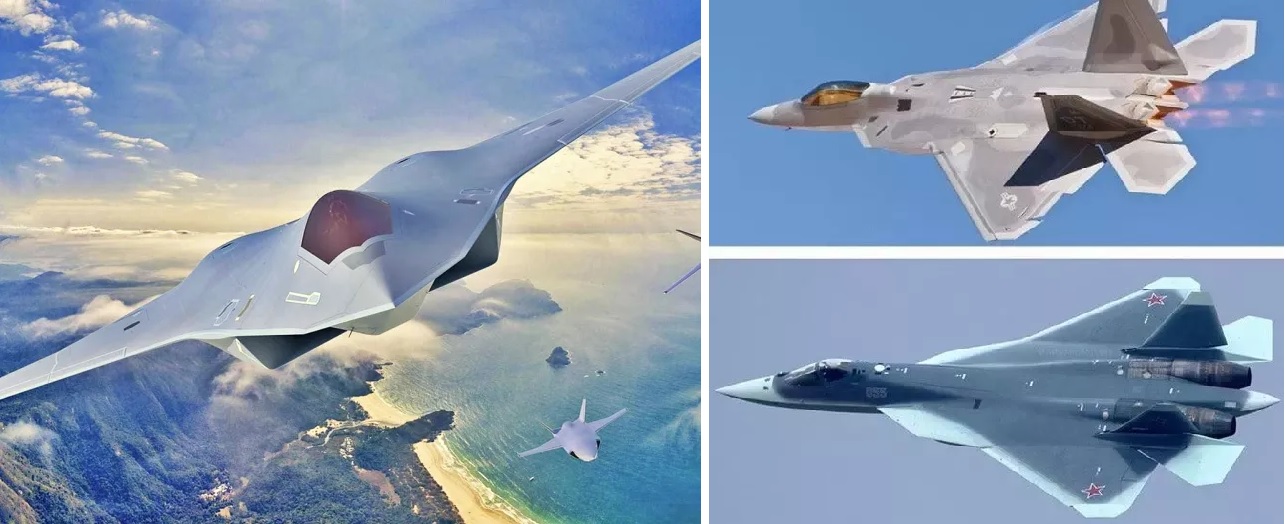 Key Differences Between 5th vs. 6th Generation Fighter Jets
Key Differences Between 5th vs. 6th Generation Fighter Jets
-
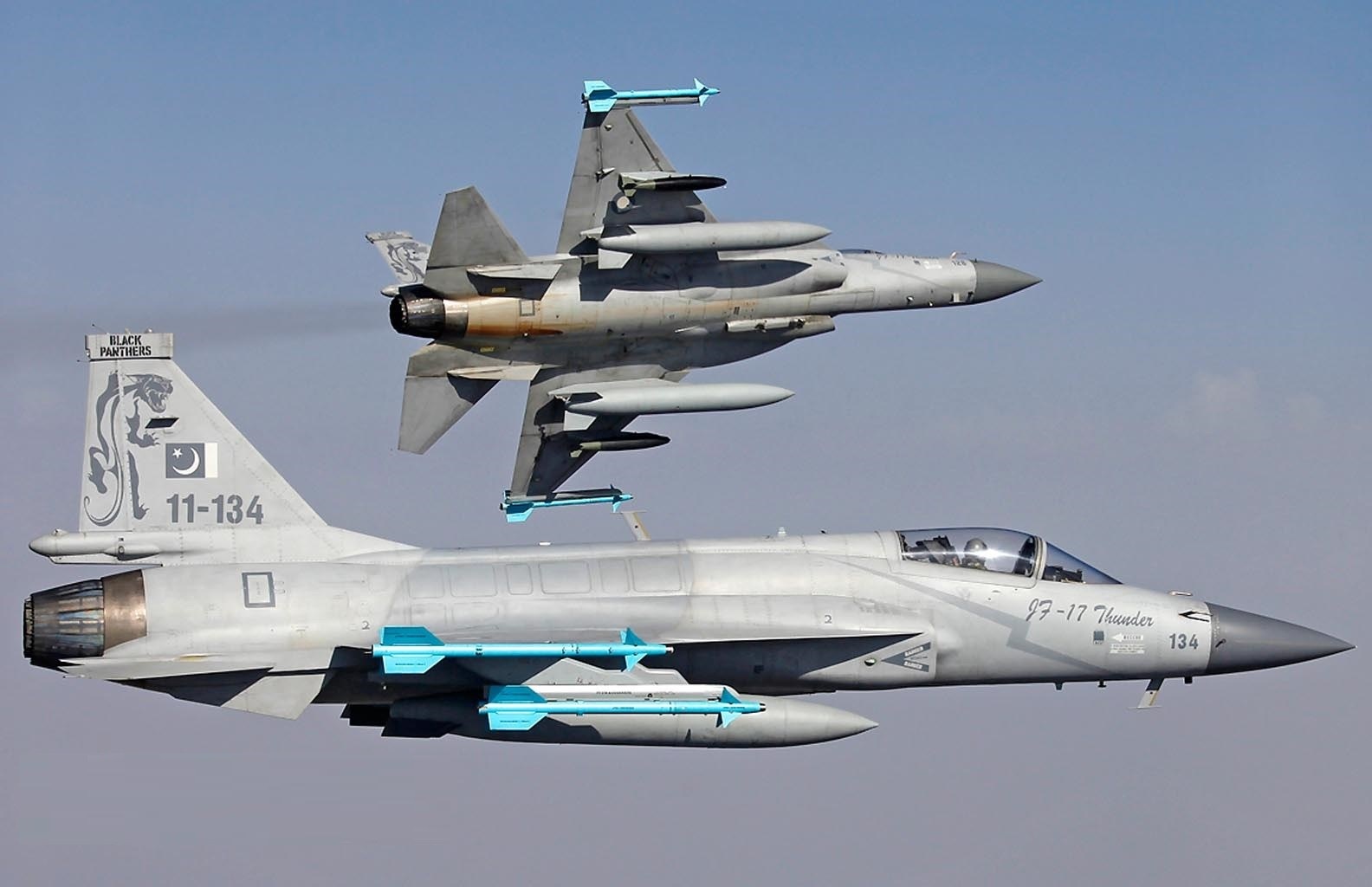 Pakistan Air Force to Unveil Stealth-Enhanced JF-17 Block 4 Fighter Jet by 2028
Pakistan Air Force to Unveil Stealth-Enhanced JF-17 Block 4 Fighter Jet by 2028
-
 Pakistan Announces 15% Increase in Defence Budget for 2024-25 Amid Economic Crisis
Pakistan Announces 15% Increase in Defence Budget for 2024-25 Amid Economic Crisis
-
 India's TEDBF Program Takes Shape First Flight by 2028: Aiming for Naval Supremacy with Advanced Stealth and Technology
India's TEDBF Program Takes Shape First Flight by 2028: Aiming for Naval Supremacy with Advanced Stealth and Technology
-
 India’s AMCA Engine Decision: Safran vs. Rolls-Royce Final Expected by 2025
India’s AMCA Engine Decision: Safran vs. Rolls-Royce Final Expected by 2025
-
 What Would Happen if the USA Left NATO? A Comprehensive Analysis
What Would Happen if the USA Left NATO? A Comprehensive Analysis
-
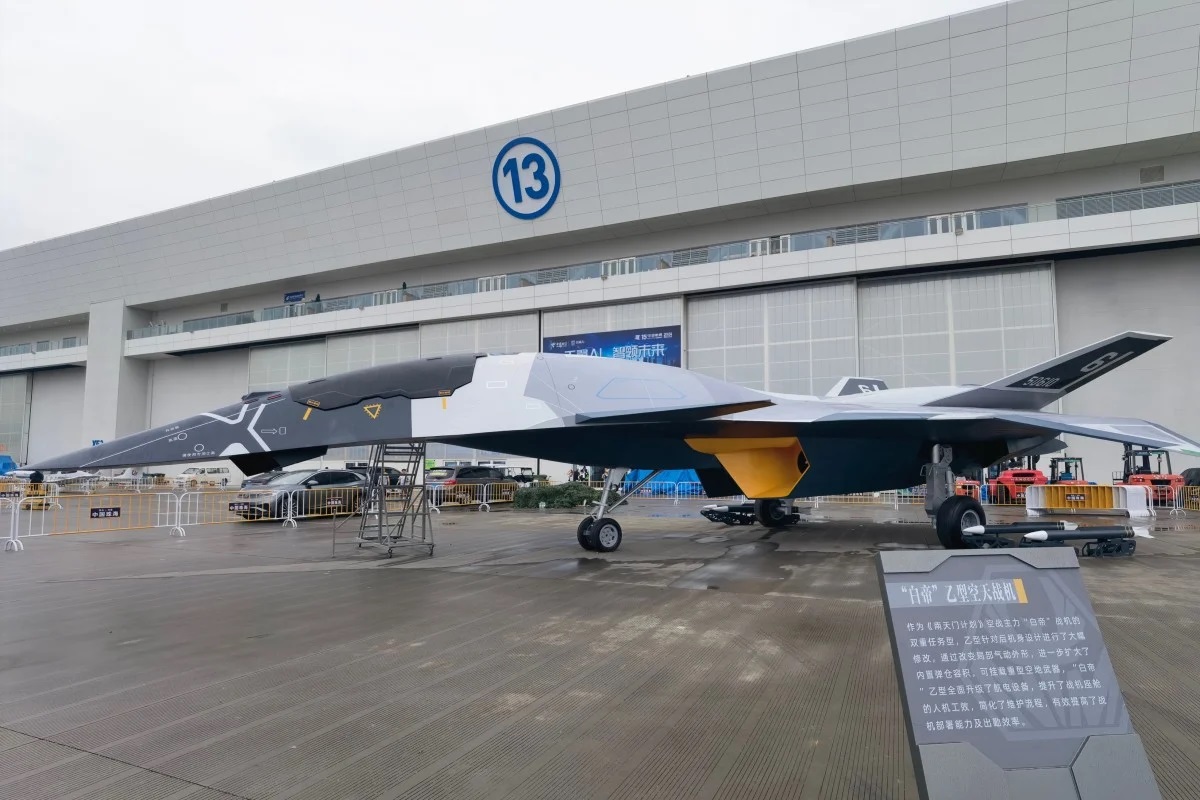 China Unveils the 6th-Generation “Baidi B-Type” Aerospace Fighter Concept
China Unveils the 6th-Generation “Baidi B-Type” Aerospace Fighter Concept
Top Trending in 4 Days
-
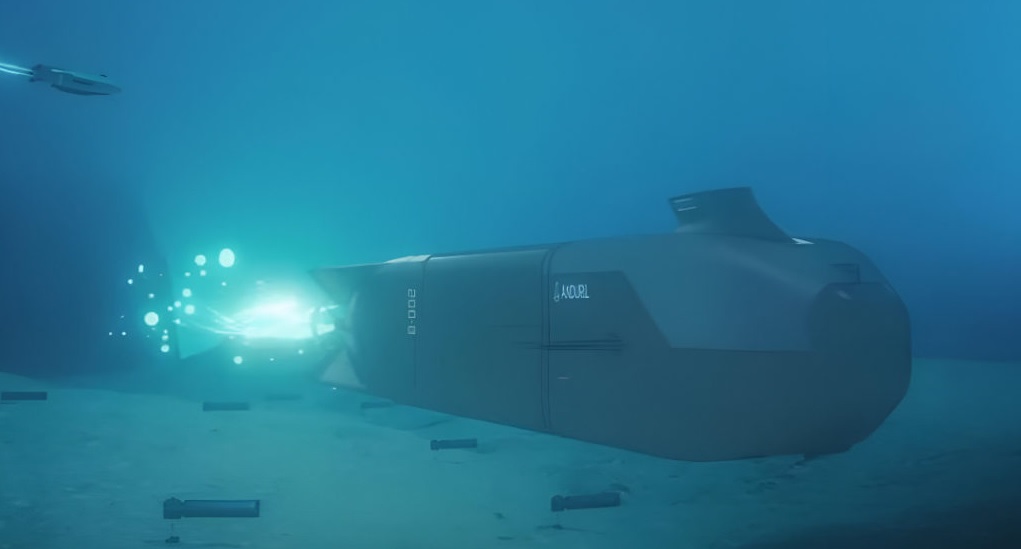 AI-Driven Submarine Hunt Could End Era of “Invisible” Underwater Threats
AI-Driven Submarine Hunt Could End Era of “Invisible” Underwater Threats
-
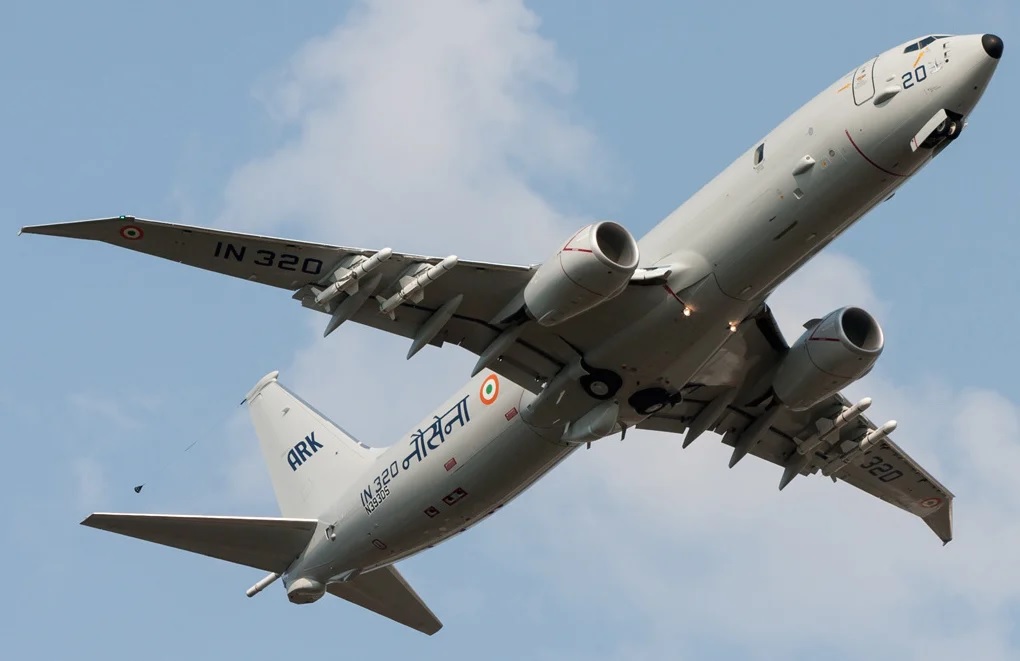 U.S. Delegation to Visit India for $4 Billion P-8I Aircraft Deal Talks
U.S. Delegation to Visit India for $4 Billion P-8I Aircraft Deal Talks
-
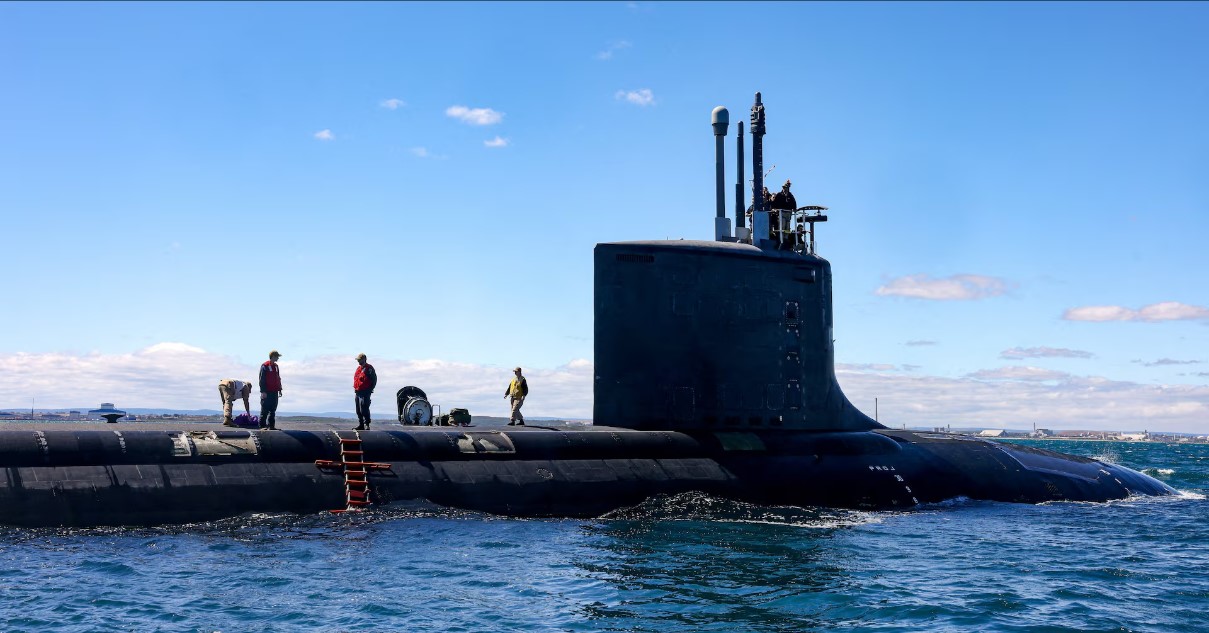 Australia Commits A$12 Billion to Upgrade Henderson Precinct as AUKUS Submarine Hub
Australia Commits A$12 Billion to Upgrade Henderson Precinct as AUKUS Submarine Hub
-
 Defence Ministry Reviews IAF's Proposal for 114 'Made in India' Rafale Fighter Jets
Defence Ministry Reviews IAF's Proposal for 114 'Made in India' Rafale Fighter Jets
-
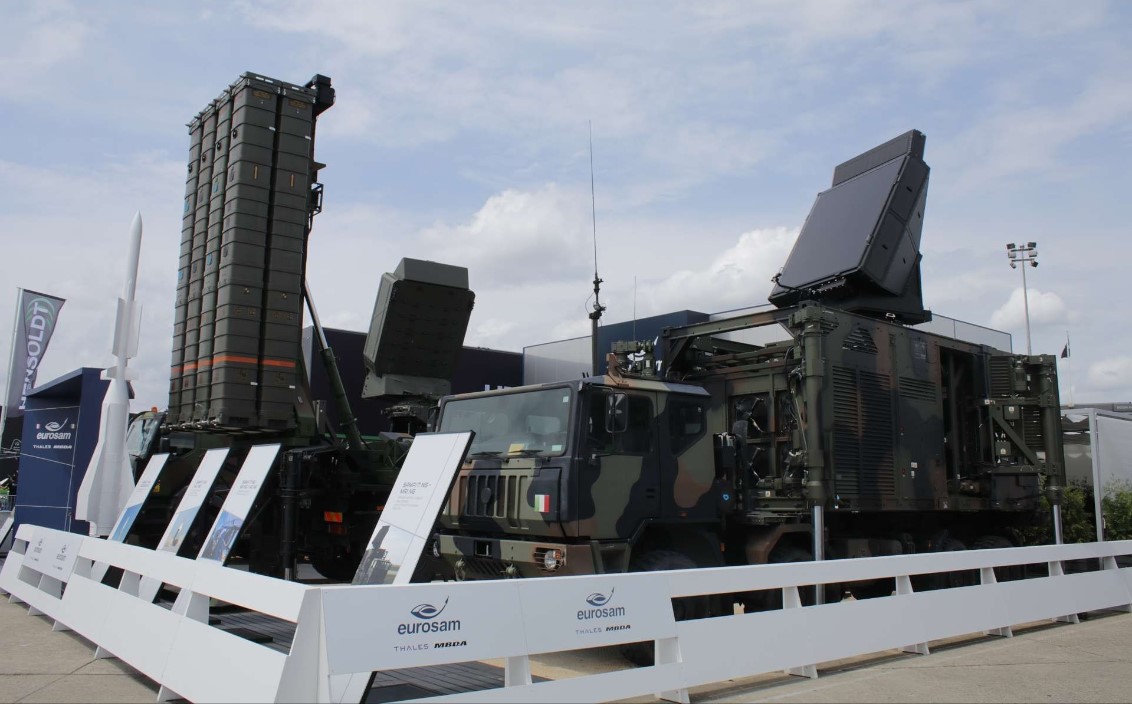 Denmark to Invest $ 9.1 Billion in European Air and Missile Defense Systems
Denmark to Invest $ 9.1 Billion in European Air and Missile Defense Systems
-
 China's AI-Driven Missile Production Line Achieves Over 100 Missiles Per Day
China's AI-Driven Missile Production Line Achieves Over 100 Missiles Per Day
-
 India May Be Invited to Co-Develop Russia’s Il-100 “Slon” as Il-76 Fleet Wanes
India May Be Invited to Co-Develop Russia’s Il-100 “Slon” as Il-76 Fleet Wanes
-
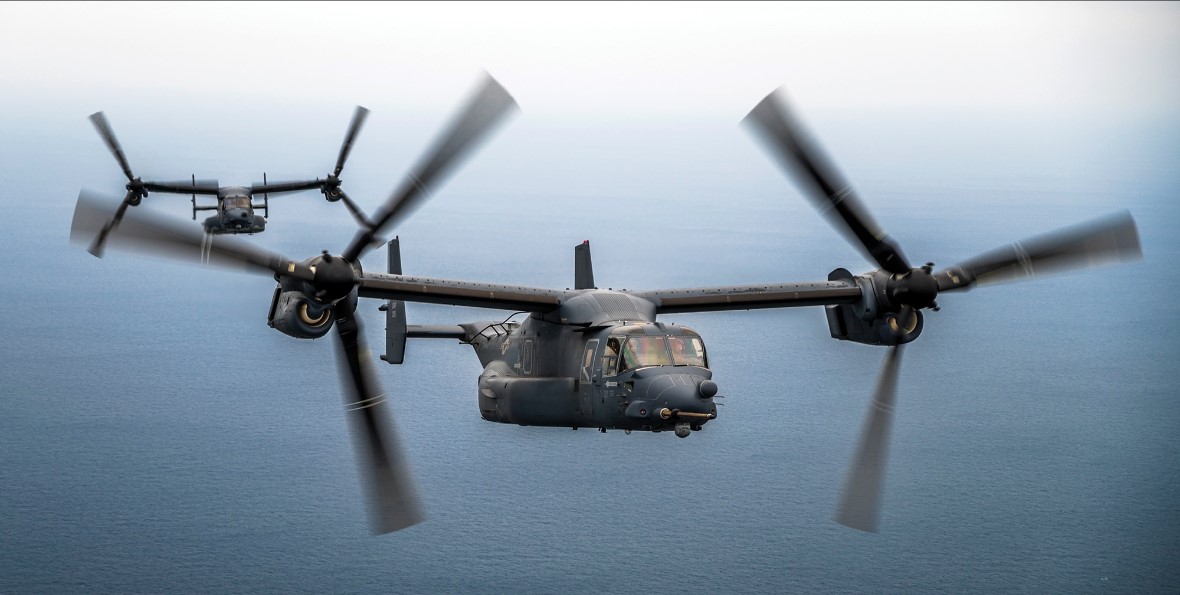 U.S Air Force Refines Plan for New Special Operations “Power Projection Wing” at Davis-Monthan
U.S Air Force Refines Plan for New Special Operations “Power Projection Wing” at Davis-Monthan







